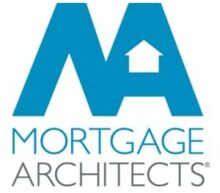Are you real estate rich and liquid capital poor? It’s a situation far too many home owners and real estate find themselves in these days. Everything you do when it comes to building your wealth with real estate relies on liquidity. If a costly home repair like a broken furnace or a leaky roof appears out of the blue, chances are you may not have an extra $10,000 sitting around in your rainy-day fund to address major repair costs.
With relatively low rates here to stay for the foreseeable future, many homebuyers are deciding to tap into the equity in their homes with a Home Equity Line of Credit (HELOC). While a HELOC makes sense for short term borrowing, have you ever considered the cost of not converting that HELOC to a variable rate mortgage? Converting their mortgage to a variable rate mortgage is ideal for those who have cash flow to do a blended principal and interest payment and who don’t want to overpay on interest rates. When in comes to mortgages – getting low rates and good advice is key.
HELOC vs. VRM – Real Interest Rates and Cost of Borrowing
Variable rate mortgages have a distinct advantage over HELOCs. You don’t have to be a math whiz to see the savings opportunity. The interest rate on HELOCs is typically prime plus 0.5% or more (that would be 4.45 percent or greater today), while you can find variable rate mortgages up to 1% below prime (that up to 1.5% lower … or more than $100 per month per $100,000 owing).
HELOC vs Fixed Rate Mortgage – Even Fixed Rates Are Cheaper Today
The difference in spread between longer term fixed mortgage rates and the prime lending rate that you can get a fixed rate mortgage (guaranteed rate) lower than what you would be paying on a line of credit. This would mean that you a rate lower than your HELOC rate and rate certainty for the next number of years.
Principal Repayment with Mortgages Vs. HELOC
Not only will you save on interest and improve your cash flow by converting, a variable rate mortgage provides a better principal repayment. As you repay your debt, more money will go towards principal and less towards interest. Over the life of your mortgage, you’ll save thousands in interest and pay it off years sooner – what’s not to love? Your interest payments are lower and you repay more principal – win-win! When you borrow to invest with a VRM you also get the same interest deductibility as its not what you borrow against or the type of borrowing product you use. It is what you borrow for that makes interest tax deductible.
Getting Approved
Qualifying for a mortgage vs a HELOC is very similar. It is a little harder to get approved for a HELOC because the maximum Loan-to-Value (LTV) is 65 percent unless there is a mortgage component. Homeowners used to be able to obtain a HELOC with a maximum LTV of 80 percent. The limitations of a HELOC remove this type financing from the list of options for those who don’t have enough saved for a down payment or enough equity in their homes.
While a line of credit only requires an interest only payment, when the lender calculates this into debt servicing they will also include a principal payment just like a normal mortgage to confirm whether you qualify. The bottom line is that while the flexibility may seem appealing – the real impact to your wealth when you consider the missed principal repayment and the higher rate are a disaster.
The qualifying rate for HELOCs and variable rate mortgages is similar. You’ll have to qualify at a higher rate known as the qualifying rate. Even though you can afford the lower rate of variable rate mortgages, you’ll have to qualify at the lender’s posted five-year rate, which can be a lot higher. The qualifying rate is to ensure you can handle higher payments if and when rates go up. Make sure you’ll qualify for the amount you want before you consider this strategy.
If you’re interested in reducing your interest rates today or would like a complimentary review, then please give me a call and I will always be happy to help. You can email me us at clientcare@mortgagemanagement.ca or give us a call today at 416-410-9905.

